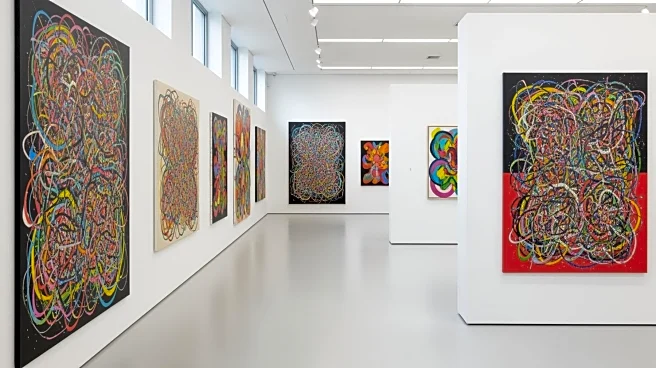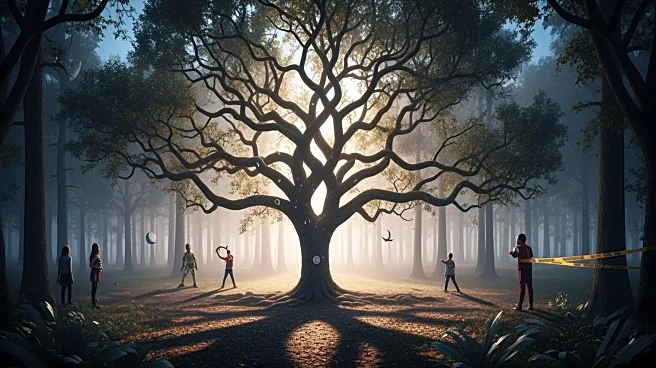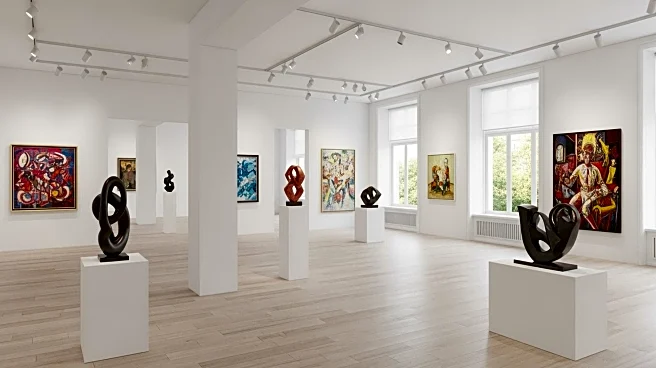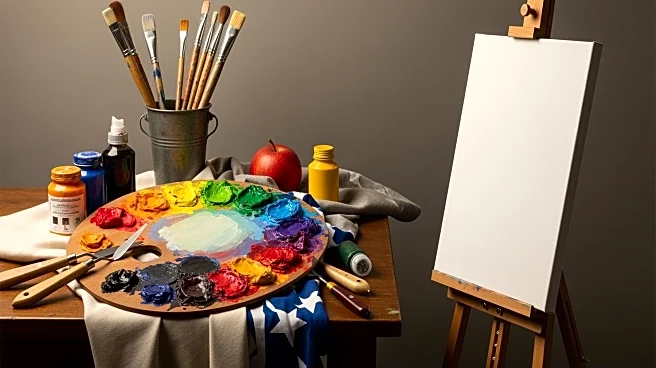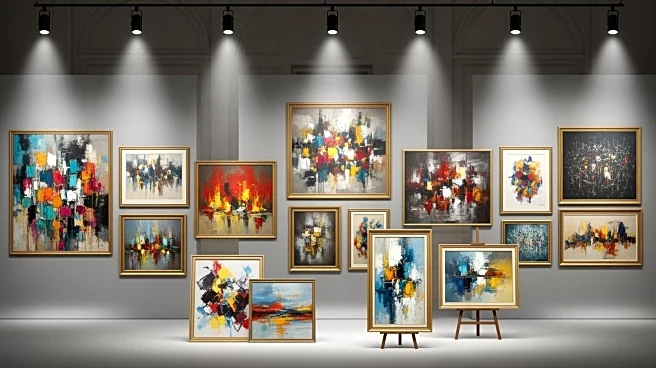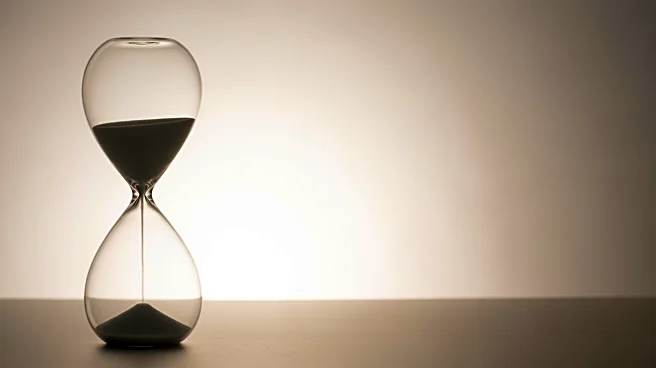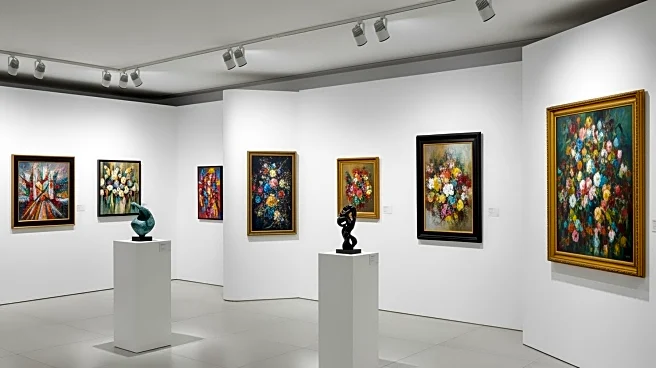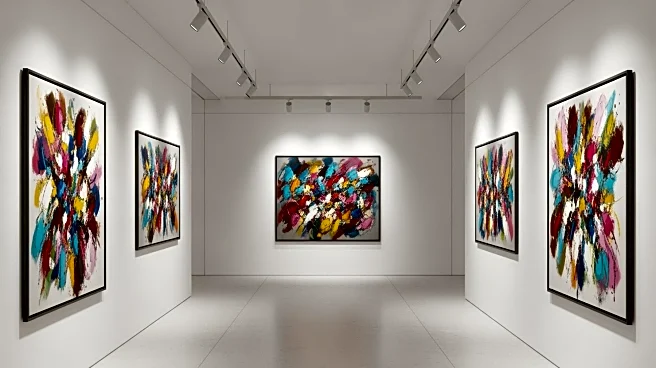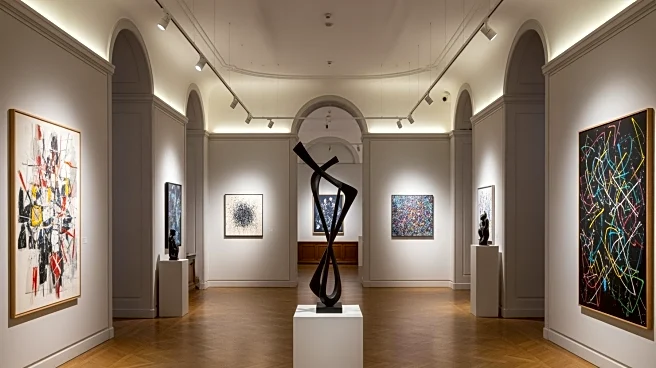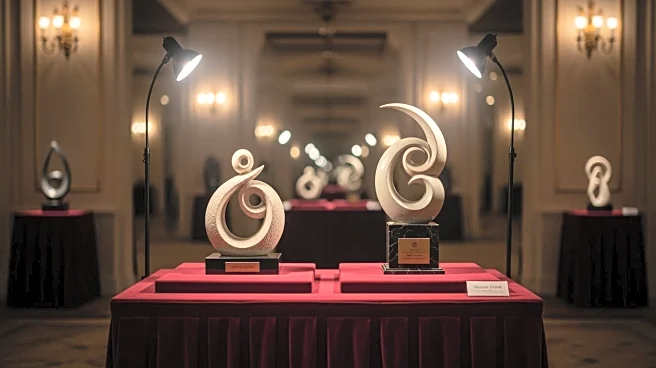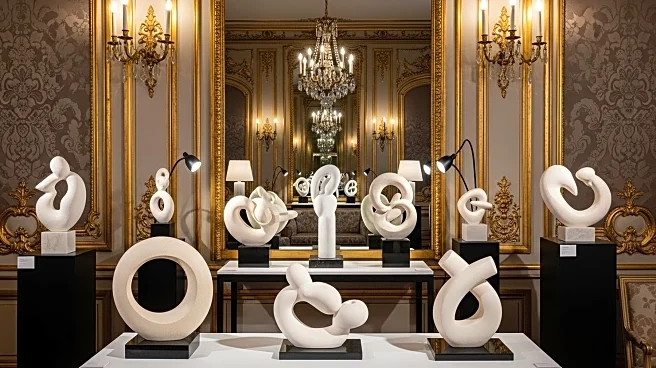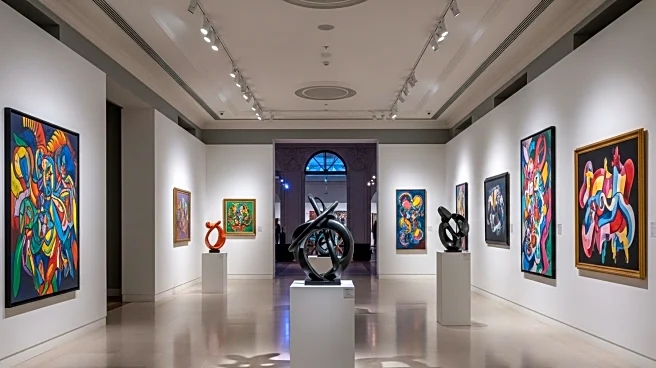What's Happening?
The Fondation Louis Vuitton in Paris is presenting a major retrospective of Gerhard Richter, showcasing 275 works from the artist's extensive career. The exhibition spans Richter's early photographic paintings from the 1960s to his recent ink-cloud drawings.
Curated by Dieter Schwarz and Nicholas Serota, the retrospective aims to provide a comprehensive view of Richter's artistic evolution. The exhibition is organized chronologically, beginning with Richter's first painting, Table (1962), and concluding with his latest works on paper. The retrospective highlights Richter's ability to reinvent his style, from blurred photo paintings to abstract canvases, while maintaining a focus on German history.
Why It's Important?
This retrospective is significant for the art world as it offers an in-depth look at Gerhard Richter's contributions to contemporary art. Richter's work has been influential in addressing themes of German history and exploring the boundaries of painting. The exhibition provides an opportunity for art enthusiasts and scholars to study the evolution of his style and thematic concerns. By showcasing such a large body of work, the retrospective underscores Richter's impact on modern art and his role in shaping artistic discourse. The exhibition also highlights the collaboration between public and private collections, emphasizing the importance of accessibility in the art community.
What's Next?
The retrospective is expected to attract significant attention from art critics, historians, and the general public, potentially influencing future exhibitions and studies of Richter's work. The exhibition runs until March 2026, providing ample time for visitors to engage with the artist's oeuvre. As the art community reflects on Richter's legacy, discussions may arise regarding the preservation and interpretation of his work. The exhibition may also inspire other institutions to organize similar retrospectives, further solidifying Richter's place in art history.
Beyond the Headlines
The retrospective not only showcases Richter's artistic achievements but also prompts reflection on the ethical and historical dimensions of his work. Richter's exploration of German history, particularly through pieces like Uncle Rudi, invites viewers to consider the complexities of memory and identity. The exhibition's chronological approach allows for a deeper understanding of how Richter's personal experiences and historical context have shaped his art. This retrospective may lead to broader discussions about the role of art in addressing historical narratives and the responsibilities of artists in representing cultural memory.
